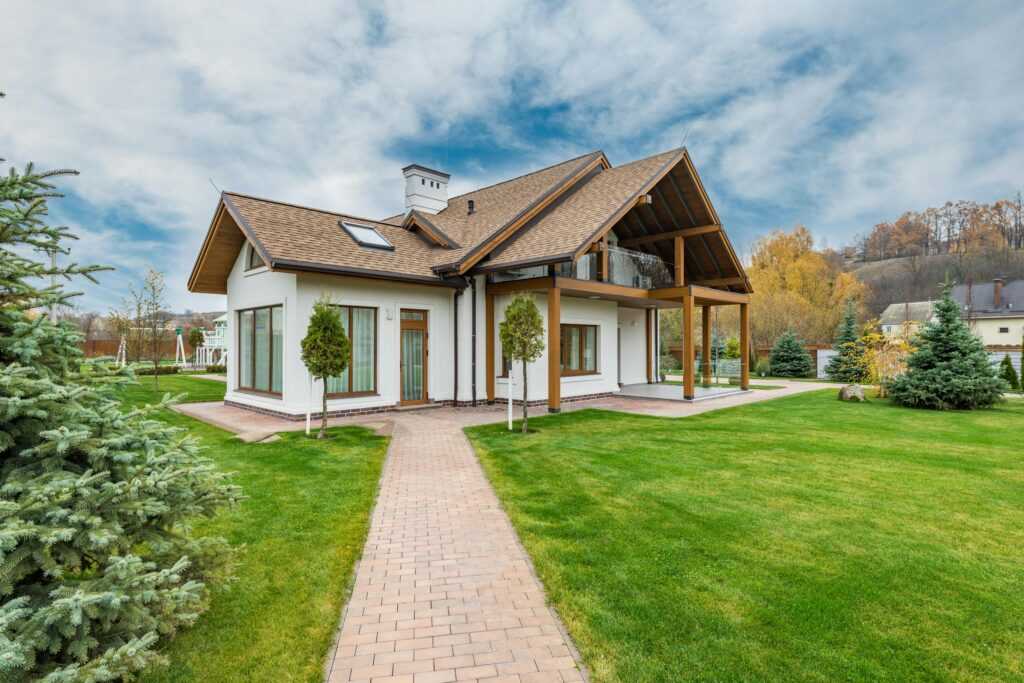A building’s roof is more than a structural necessity—it’s a defining element of its architectural identity. From modern minimalist lines to traditional gabled designs, the roof plays a critical role in shaping a property’s aesthetic, performance, and value. Yet, this architectural asset is often overlooked until visible damage appears. Regular roof cleaning, especially with non-invasive methods like soft washing, can preserve and even enhance a building’s design integrity for years to come.
The Overlooked Role of the Roof in Architectural Design
Architects and property owners alike recognize the importance of exterior finishes and roofing materials in maintaining harmony within a structure’s design. Whether it’s a historic slate tile roof or a sleek contemporary metal finish, roofing contributes to a building’s character, curb appeal, and overall structural narrative.
But over time, roofs collect biological growth such as algae, moss, lichen, and mold—particularly in humid or shaded environments. These organic invaders don’t just stain materials; they slowly degrade them. The result is a diminished appearance and compromised durability, which can quietly erode the integrity of the original architectural vision.
What Is Soft Washing—and Why It Matters
Traditional pressure washing may seem like a quick fix for roof stains, but it can be harsh and damaging to sensitive roofing materials. This is where soft wash roof cleaning proves essential.
Soft washing uses low-pressure water combined with eco-friendly cleaning solutions to remove dirt, algae, and bacteria at their source. This method safely penetrates porous surfaces and kills organic growth without stripping protective coatings or dislodging roofing components. It’s the preferred cleaning method recommended by major roofing manufacturers for preserving both aesthetics and warranties.
For more on this effective method, learn about soft wash roof cleaning.
Benefits of Roof Cleaning for Long-Term Design Preservation
1. Protecting Original Roofing Materials
Roofing materials are selected not only for durability but also for their contribution to the building’s visual style. Over time, contaminants like Gloeocapsa magma (the black streak-causing algae commonly seen on roofs) can deteriorate shingles, tiles, and membranes.
By eliminating biological growth early with soft washing, property owners prevent irreversible staining and premature material failure—preserving the roof’s original form and function.
2. Maintaining Color Harmony and Curb Appeal
Discoloration caused by moss and mold can clash with the building’s intended color palette. A cleaned roof restores the original hue and sheen of materials, enhancing visual continuity with other architectural elements like siding, trim, and hardscapes.
Clean lines and vibrant surfaces support the overall design language, whether it’s a high-contrast modern facade or a warm, rustic aesthetic.
3. Preventing Structural and Water Damage
Unchecked roof growth can lead to moisture retention, which may result in rotting underlayment, weakened decking, and ultimately, leaks. Water damage not only affects functionality—it also leads to unsightly ceiling stains, warped wood, and other interior effects that contradict the principles of good architectural design.
Routine soft wash treatments extend the lifespan of roofing systems and reduce costly repairs, keeping the building’s form aligned with its function.
4. Supporting Energy Efficiency and Ventilation
A dirty roof absorbs more heat due to darkened surfaces, which can increase cooling costs. Clean roofs reflect sunlight more effectively, supporting passive design strategies and reducing HVAC strain. Moreover, mold buildup can restrict attic ventilation, contributing to trapped moisture and heat.
For architects and eco-conscious property owners, roof cleaning is a simple yet powerful step in maintaining an energy-efficient envelope.
Best Practices for Maintaining a Clean, Architecturally Sound Roof
- Schedule annual inspections: Early detection of algae, mold, and debris helps prevent long-term damage.
- Choose certified professionals: Look for contractors trained in soft washing techniques to avoid harming materials.
- Avoid DIY pressure washing: High pressure can void warranties and cause granule loss on shingles.
- Consider surrounding landscaping: Trim back overhanging trees that encourage moss and block sunlight.
A Sustainable Investment in Design Longevity
Preserving a roof’s appearance isn’t just about looks—it’s about honoring the architect’s intent, ensuring safety, and maximizing return on investment. For homeowners, facility managers, and anyone invested in property design, roof cleaning is a proactive strategy that upholds the harmony between function and form.
With the rise of modern design thinking and sustainable practices, roof care should no longer be an afterthought. By integrating routine soft washing into your maintenance plan, you safeguard one of the most important elements of your structure’s design narrative.
Conclusion: Protect Design by Cleaning with Care
In the world of architecture, every detail counts—especially the roof. Clean, well-maintained roofing not only supports a building’s durability but also its story. Whether protecting a historic structure or elevating a modern masterpiece, regular roof cleaning using gentle, effective techniques like soft washing is essential for preserving design integrity.
Don’t wait until streaks and stains take hold. Make roof care part of your architectural preservation plan today.

